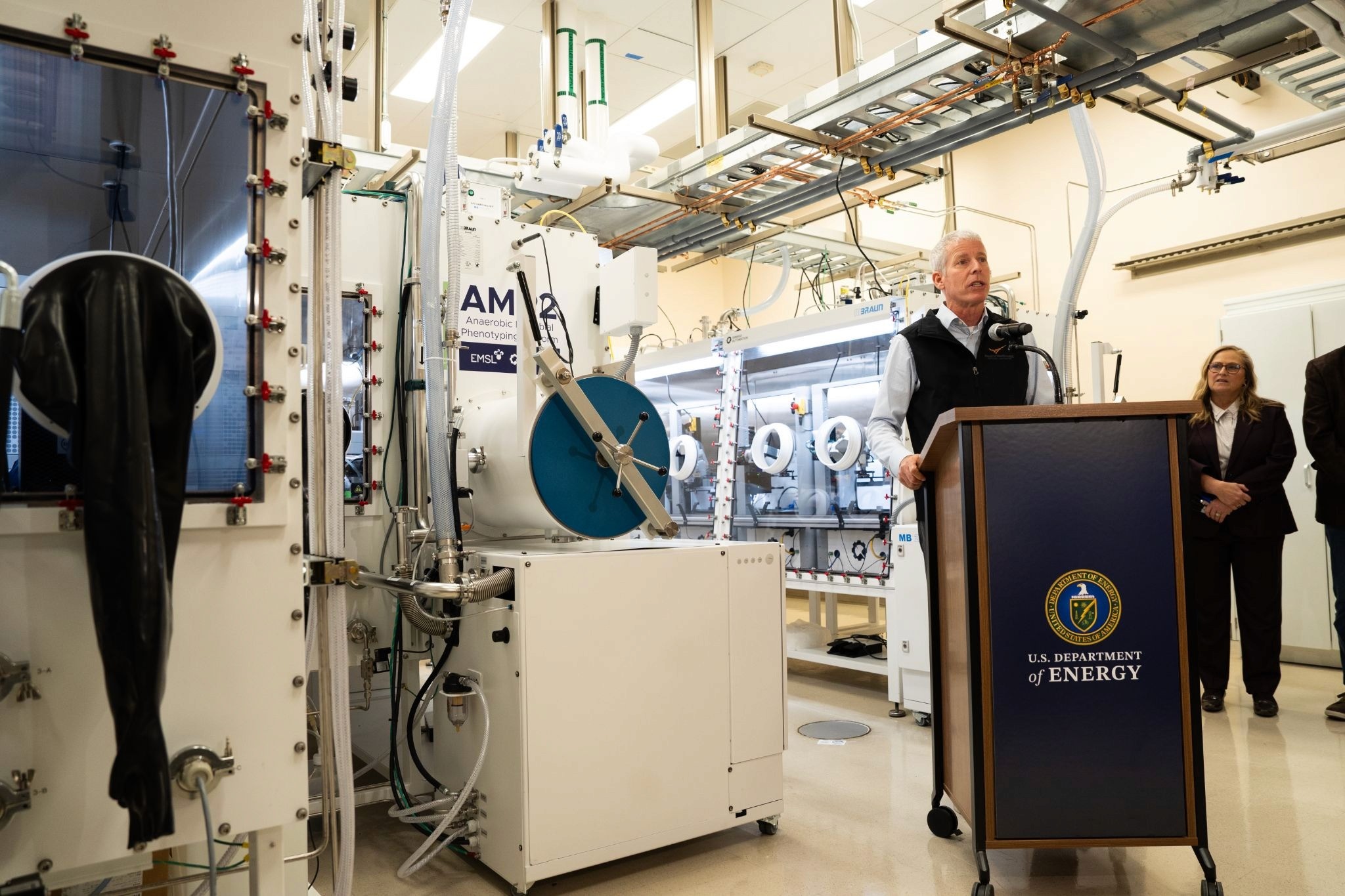Visualizing How Microbes Turn CO2 into Bioplastic
A new multimodal imaging platform developed by Cornell researchers uncovers the energy conversion pathways in biohybrids, offering a promising avenue for sustainable and environmentally friendly products
Jul 29, 2023
Whity2j (Canva)
In the quest for sustainable and environmentally friendly products, one might not immediately consider bacteria as a potential ally. Yet, in the realm of scientific innovation, these microscopic organisms are being harnessed in ways that challenge our conventional understanding of energy production.
In recent years, scientists have engineered microbe-semiconductor biohybrids, a fusion of the biosynthetic capabilities of living systems with the light-harvesting prowess of semiconductors. These microscopic marvels utilize solar energy to transform carbon dioxide into valuable chemical products, such as bioplastics and biofuels. However, the intricacies of energy transport within these minuscule, complex systems, and the potential for their optimization, remain shrouded in mystery.

Researchers at Cornell University have taken a significant step toward unveiling these secrets. They have developed a multimodal platform capable of imaging these biohybrids at a single-cell resolution, a breakthrough that promises to deepen our understanding of their functionality and potential for enhanced energy conversion.
The team's findings, encapsulated in their paper, "Single-Cell Multimodal Imaging Uncovers Energy Conversion Pathways in Biohybrids," was published recently in Nature Chemistry. The research was spearheaded by postdoctoral researcher Bing Fu and former postdoctoral researcher Xianwen Mao under the guidance of Peng Chen, a professor of chemistry at the College of Arts and Sciences.
This project is a branch of a larger collaboration, funded by the U.S. Department of Energy (DOE), involving Tobias Hanrath, a professor at the Smith School of Chemical and Biomolecular Engineering in Cornell Engineering, and Buz Barstow, an assistant professor of biological and environmental engineering in the College of Agriculture and Life Sciences. The overarching aim is to advance bioenergy research through microscopic imaging of microbes.
Traditionally, biohybrid research has been conducted with bacteria in bulk, focusing on the overall yield of the value-added chemicals and the collective behaviors of the cells rather than the underlying mechanism that enables the complex chemical transformation.
"Biology is very heterogeneous. The individual cells are very different. Now, in order to interrogate it better, you really need to measure it at a single-cell level," Chen said. "This is where we come in. We provide quantitative assessments of protein behaviors and also a mechanistic understanding of how the electron transport occurs from the semiconductor to the bacteria cell."
The team's innovative platform combined multi-channel fluorescence imaging with photoelectrochemical current mapping to survey the bacterium Ralstonia eutropha. It was able to simultaneously image, track, and quantify multiple proteins in the cell while also measuring the flow of electrons, ultimately correlating the cellular protein properties and electron transport processes.

The researchers successfully differentiated the functional roles of two types of hydrogenases—one bound to the cell’s membrane and a soluble one in the cytoplasm—that help metabolize hydrogen and drive CO2 fixation. While the soluble hydrogenase is known to be critical for metabolizing hydrogen, the researchers found that the membrane-bound hydrogenase, while less important, actually facilitates the process and makes it more efficient.
Moreover, the team discovered that the bacteria can uptake a large amount of electrons from semiconductor photocatalysts. The measured electron current was found to be three orders of magnitude larger than what scientists previously thought, suggesting that future bacteria strains could be engineered to improve the efficiency of energy conversion.
The researchers also found that membrane-bound and soluble hydrogenases play a crucial role in mediating electron transport from the semiconductor into the cell. Interestingly, the cell can not only accept electrons but also expel them in the opposite direction without the assistance of hydrogenases.
The imaging platform is versatile enough to be used to study other biological-inorganic systems, including yeast, and for other processes, such as nitrogen fixation and pollutant removal.
"Our multimodal imaging platform is powerful, but it, of course, has its own limits," Chen said. "We can image and study proteins, but our approach does not allow us to analyze small molecule compositions. And so one can think about further integrating our approach with other techniques—for example, nanoscale mass spectrometry—so it would be really powerful. We’re not there yet."


















